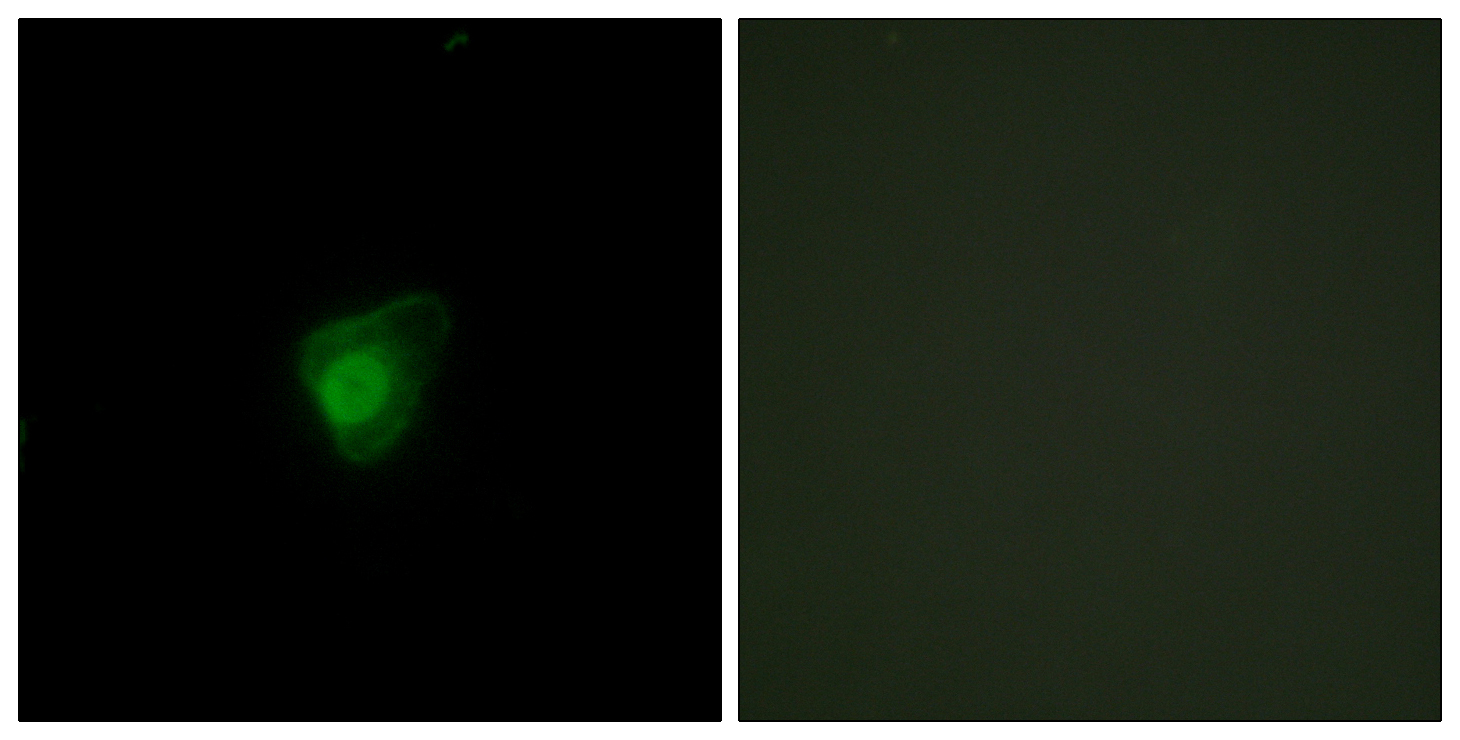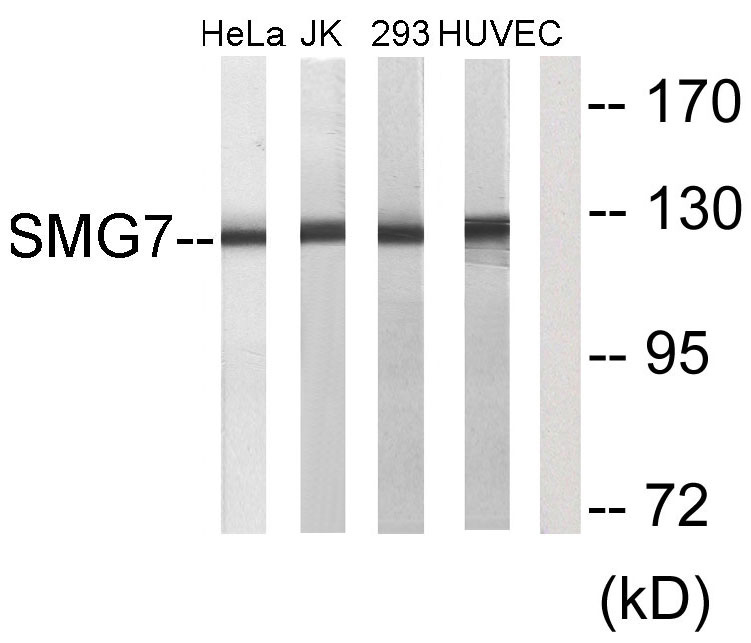SMG7 Polyclonal Antibody
- Catalog No.:YT4342
- Applications:WB;IHC;IF;ELISA
- Reactivity:Human;Mouse
- Target:
- SMG7
- Fields:
- >>mRNA surveillance pathway
- Gene Name:
- SMG7
- Protein Name:
- Protein SMG7
- Human Gene Id:
- 9887
- Human Swiss Prot No:
- Q92540
- Mouse Swiss Prot No:
- Q5RJH6
- Immunogen:
- The antiserum was produced against synthesized peptide derived from human SMG7. AA range:521-570
- Specificity:
- SMG7 Polyclonal Antibody detects endogenous levels of SMG7 protein.
- Formulation:
- Liquid in PBS containing 50% glycerol, 0.5% BSA and 0.02% sodium azide.
- Source:
- Polyclonal, Rabbit,IgG
- Dilution:
- WB 1:500 - 1:2000. IHC 1:100 - 1:300. IF 1:200 - 1:1000. ELISA: 1:20000. Not yet tested in other applications.
- Purification:
- The antibody was affinity-purified from rabbit antiserum by affinity-chromatography using epitope-specific immunogen.
- Concentration:
- 1 mg/ml
- Storage Stability:
- -15°C to -25°C/1 year(Do not lower than -25°C)
- Other Name:
- SMG7;C1orf16;EST1C;KIAA0250;Protein SMG7;EST1-like protein C;SMG-7 homolog;hSMG-7
- Observed Band(KD):
- 127kD
- Background:
- SMG7, nonsense mediated mRNA decay factor(SMG7) Homo sapiens This gene encodes a protein that is essential for nonsense-mediated mRNA decay (NMD); a process whereby transcripts with premature termination codons are targeted for rapid degradation by a mRNA decay complex. The mRNA decay complex consists, in part, of this protein along with proteins SMG5 and UPF1. The N-terminal domain of this protein is thought to mediate its association with SMG5 or UPF1 while the C-terminal domain interacts with the mRNA decay complex. This protein may therefore couple changes in UPF1 phosphorylation state to the degradation of NMD-candidate transcripts. Alternative splicing results in multiple transcript variants encoding distinct isoforms. [provided by RefSeq, Aug 2011],
- Function:
- function:Plays a role in nonsense-mediated mRNA decay. Recruits RENT1 to cytoplasmic mRNA decay bodies.,similarity:Contains 2 TPR repeats.,subcellular location:Predominantly cytoplasmic, and nuclear. Shuttles between nucleus and cytoplasm.,subunit:Part of a complex that contains SMG5, SMG7, PP2AC, a short isoform of UPF3A (isoform UPF3AS, but not isoform UPF3AL) and phosphorylated RENT1.,
- Subcellular Location:
- Cytoplasm . Nucleus . Predominantly cytoplasmic, and nuclear. Shuttles between nucleus and cytoplasm. .
- Expression:
- Bone marrow,Brain,Epithelium,Testis,
- June 19-2018
- WESTERN IMMUNOBLOTTING PROTOCOL
- June 19-2018
- IMMUNOHISTOCHEMISTRY-PARAFFIN PROTOCOL
- June 19-2018
- IMMUNOFLUORESCENCE PROTOCOL
- September 08-2020
- FLOW-CYTOMEYRT-PROTOCOL
- May 20-2022
- Cell-Based ELISA│解您多样本WB检测之困扰
- July 13-2018
- CELL-BASED-ELISA-PROTOCOL-FOR-ACETYL-PROTEIN
- July 13-2018
- CELL-BASED-ELISA-PROTOCOL-FOR-PHOSPHO-PROTEIN
- July 13-2018
- Antibody-FAQs
- Products Images

- Western Blot analysis of various cells using SMG7 Polyclonal Antibody diluted at 1:2000
.jpg)
- Western Blot analysis of HuvEc cells using SMG7 Polyclonal Antibody diluted at 1:2000

- Immunofluorescence analysis of HepG2 cells, using SMG7 Antibody. The picture on the right is blocked with the synthesized peptide.

- Western blot analysis of lysates from HeLa, Jurkat, 293, and HUVEC cells, using SMG7 Antibody. The lane on the right is blocked with the synthesized peptide.

- Immunohistochemical analysis of paraffin-embedded human oophoroma. 1, Antibody was diluted at 1:200(4° overnight). 2, Tris-EDTA,pH9.0 was used for antigen retrieval. 3,Secondary antibody was diluted at 1:200(room temperature, 45min).



